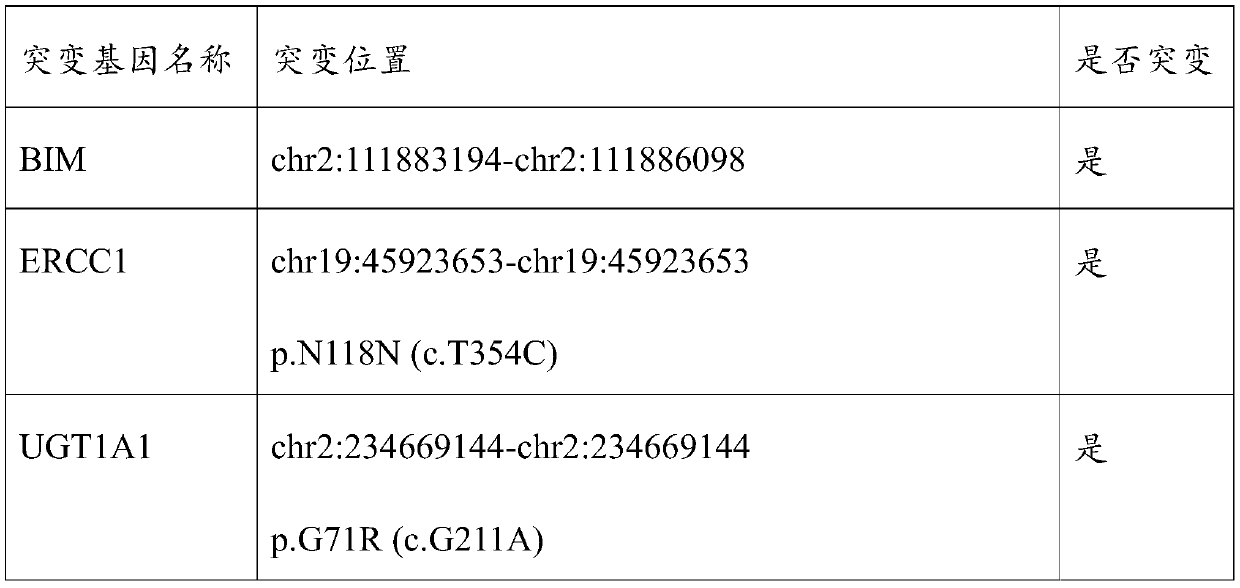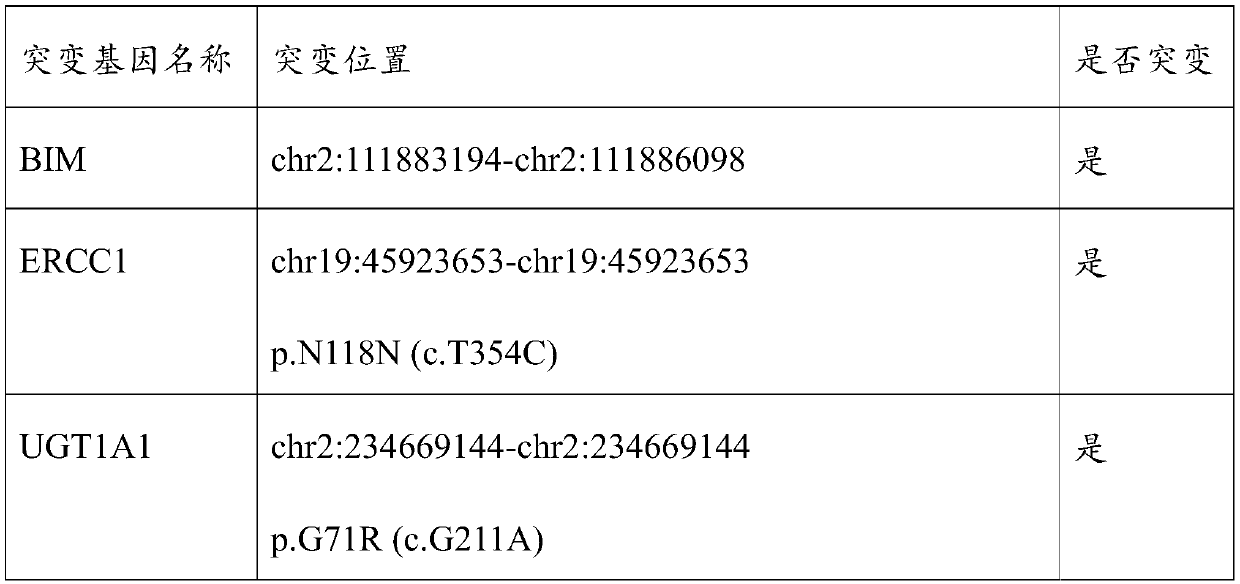Molecular markers for detecting lung metastasis of minimal osteosarcoma and application thereof
An osteosarcoma and diagnostic marker technology, applied in the field of clinical medicine, can solve the problems of difficult early diagnosis of osteosarcoma lung metastasis, less than 20% survival rate, poor prognosis, etc.
- Summary
- Abstract
- Description
- Claims
- Application Information
AI Technical Summary
Problems solved by technology
Method used
Image
Examples
Embodiment 1
[0021] Example 1 ctDNA Mutation Gene Detection and Prognosis Judgment of Osteosarcoma Patient 1
[0022] 1. Extraction of blood DNA: (1) Take 10ml of peripheral blood from the patient. Add cell washing solution to the whole blood sample, wherein the volume ratio of whole blood sample to cell washing solution is 5:14, mix the sample upside down, incubate at room temperature for 5-10 minutes, centrifuge at 13000-16000g for 1 minute at room temperature, discard the supernatant , to obtain residual cell clusters; (2) digestion and precipitation: get 20~30ul of the residual cell clusters obtained in the above-mentioned steps (1), and then add 15ul of sodium dodecyl sulfate SDS with a volume fraction of 10%, 15ul of 8M SDS with a concentration of 8M Ammonium acetate, 600ul of guanidine hydrochloride with a concentration of 5M, 3ul of proteinase K with a concentration of 20mg / ml, after 15 to 30 minutes in a water bath at 60°C, cool to room temperature in an ice bath, and then centrif...
Embodiment 2
[0030] Example 2, ctDNA mutation gene detection and prognosis judgment of patient 2
[0031] 1. Extraction of blood DNA: (1) Take 10ml of peripheral blood from the patient. Add cell washing solution to the whole blood sample, wherein the volume ratio of whole blood sample to cell washing solution is 5:14, mix the sample upside down, incubate at room temperature for 5-10 minutes, centrifuge at 13000-16000g for 1 minute at room temperature, discard the supernatant , to obtain residual cell clusters; (2) digestion and precipitation: take 20~30ul of the residual cell clusters obtained in the above-mentioned steps (1), and then add 15ul of sodium dodecyl sulfate SDS with a volume fraction of 10%, 15ul of 8M SDS with a concentration of 8M Ammonium acetate, 600ul of 5M guanidine hydrochloride, 3ul of 20mg / ml proteinase K, after 15-30 minutes in a water bath at 60°C, cool to room temperature in an ice bath, and then centrifuge at 13000-16000rpm / min at 4-8°C 2~3min, obtain the centrifug...
PUM
 Login to View More
Login to View More Abstract
Description
Claims
Application Information
 Login to View More
Login to View More - R&D Engineer
- R&D Manager
- IP Professional
- Industry Leading Data Capabilities
- Powerful AI technology
- Patent DNA Extraction
Browse by: Latest US Patents, China's latest patents, Technical Efficacy Thesaurus, Application Domain, Technology Topic, Popular Technical Reports.
© 2024 PatSnap. All rights reserved.Legal|Privacy policy|Modern Slavery Act Transparency Statement|Sitemap|About US| Contact US: help@patsnap.com









